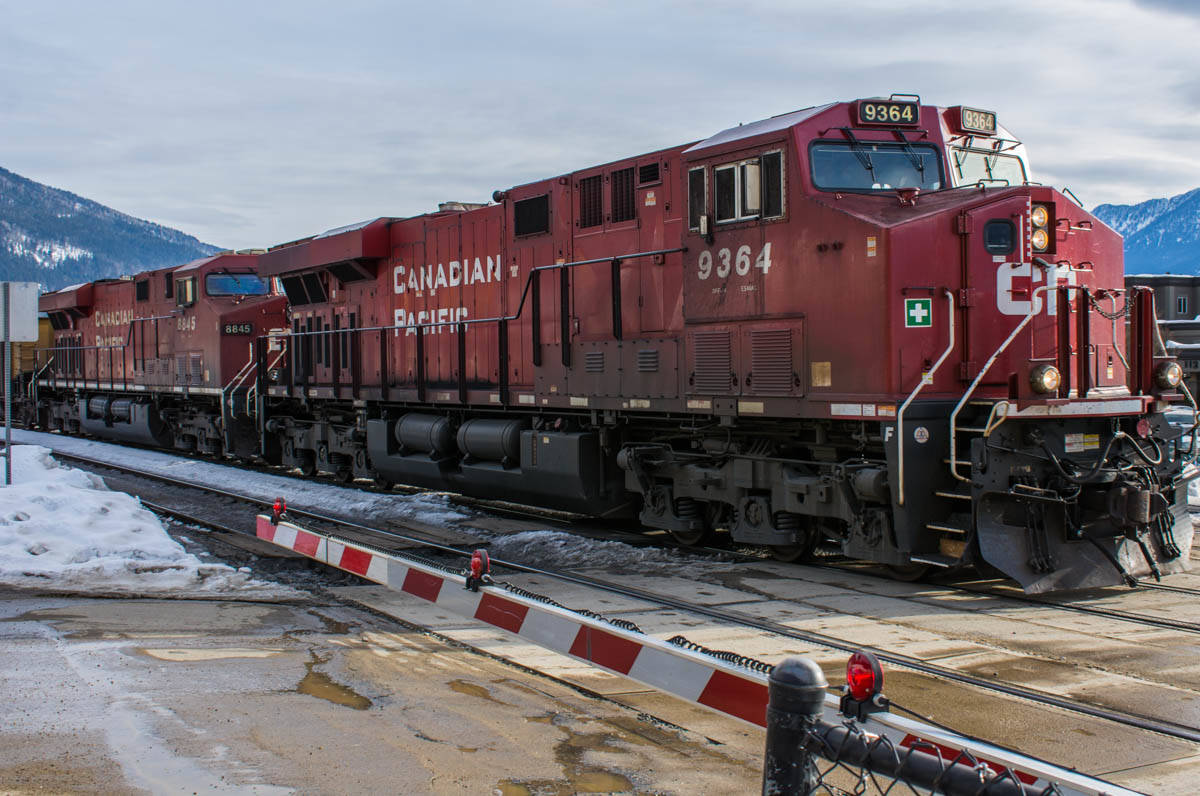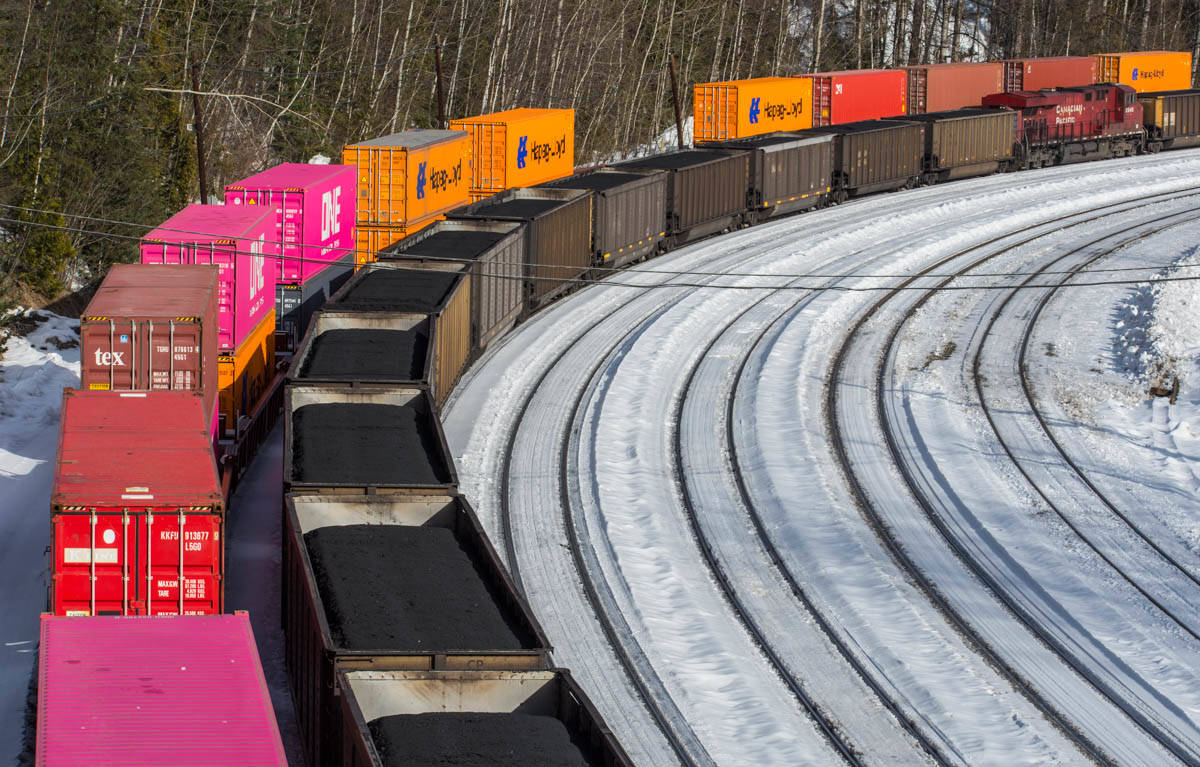B.C. has the most derailments in the country after Ontario and Alberta.
Between 2004 and 2018, Ontario had 2,574 derailments. Alberta had 2,283 and B.C. 1,870. Interestingly, most derailments occurred in one of the flattest parts of the country – Calgary, Alberta.
According to data from the Transportation Safety Board of Canada, an independent government agency that investigates rail, pipeline, aviation and marine incidents, the train line that runs from Medicine Hat to Calgary has had 589 derailments since 2004.
The line is referred to as the Brooks subdivision and operated by Canadian Pacific Railway.
Most derailments on that line, more than 80 per cent occur specifically in Glenmore, Ogden, Alyth, and 12th Street East in Calgary.
In total, there have been more than 10,000 derailments in Canada since 2004. Canadian National Railway, which operates most trains in Canada, has the most derailments at almost 5,500. Canadian Pacific is second at more than 4,000 derailments. There are on average at least 50 derailments per month across Canada.
 |
| Canadian Pacific Railway operates roughly 10,800 km of tracks in Canada. (Liam Harrap/Revelstoke Review) |
When asked why Calgary has the most derailments in the country, the Transportation Safety Board replied in an email that they “do not have the resources nor the mandate to conduct such studies unless they are warranted by an assessment indicating a significant safety issue.”
According to the data, most of the accidents did not occur on the main track.
READ MORE: CP Rail identifies all 3 train derailment victims
The line with the second highest rate of derailments in Canada is the Sprague subdivision at 488, which runs between Winnipeg and the U.S. border. That line is operated by Canadian National Railway.
According to the Transportation Safety Board, railway companies are responsible for cleaning up derailments and paying for associated costs.
Canadian Pacific Railway had no comment for this story.
What causes derailments?
Black Press Media spoke with a former employee of Canadian Pacific Railway in Revelstoke, who cleaned up derailments. He would only speak with us on the condition of remaining anonymous. For this story, we refer to him as Keith.
“There are as many reasons for a derailment as you can think of,” says Keith. Sometimes the cold breaks the rails or hot weather can cause a kink in the line. Then there’s avalanches and mudslides.
“I never took a holiday in June ever. That’s mudslide season.”
Sometimes derailments can also be caused by people damaging the tracks. One time, Keith remembers kids stole a bulldozer. When they drove over the railway line, they took the tracks with them.
“And around the corner comes a loaded coal train and into the bushes went the train. Major derailment,” says Keith.
 |
| Electric frequencies are sent down the tracks to detect breakages. (Liam Harrap/Revelstoke Review) |
However, Keith says technology has come a long way in helping prevent derailments, such as hot box detectors. They were introduced in the 1980s and placed near major towns/cities, such as Revelstoke. The boxes note temperature in the trains as they pass, such as the wheels and axles to determine if they are overheating. It will notify railway companies if something is wrong or abnormal.
Electric frequencies are also sent along the track to detect a broken rail.
“If a rail breaks, say on the main line. They would know instantly that the rail broke and where. Because there is continuity on the tracks,” says Keith.
“The railway is trying the best it can to prevent derailments. All of this equipment cost big dollars to put in place.”
And why Calgary has the most derailments, Keith does not know.
“It’s hard to say.”
On the line that goes from Field to Revelstoke over Rogers Pass there have been 72 derailments since 2004. And the line that continues past Revelstoke to Kamloops has had 44. One wreck that stands out for Keith was in 1977. The train was loaded with coal and was traveling too fast as it descended from Rogers Pass and derailed. The crash took out the rails, one bridge, and a snow shed. It took almost a year to clean up.
The Cascade subdivision has the most derailments in B.C. at 278. That line is between Vancouver and North Bend and is also operated by Canadian Pacific Railway.
Kieth says a lot of the derailments on that line would be due to third party involvements.
“As soon as you get close to Vancouver, that area is going past sawmills and lots of derailments are from hitting lumber trucks. Or tracks being tampered with. Either on purpose or by accident. Just because more stuff is going on in that area, they have more derailments.”
While Keith says derailments are still always cleaned up, times have changed.
In the past, Canadian Pacific Railway would deal with derailments themselves, now for several years, the work is done by contractors, such as Hulcher Services which is headquartered in Denton, Texas.
“All these contractors bring in these huge, big excavators and they have shears on them. The only thing the shears won’t cut is an axle. All the rail cars are cut up to chunks for scrap metal.”
The main concern is reopening the line as fast as possible. Delays and waiting trains can cost millions.
Keith says trains with all types of cargo derail and spill into the natural environment, such as lentils, grain and oil.
Keith says 90 per cent of the time in a derailment, the engine car with the crew will stay on the tracks. It’s usually the cars that come after the engine that derail. That’s one of the reasons the crew doesn’t usually get seriously injured in derailments. However, there are also no seat belts.
While derailments occur frequently, they are rarely in the news.
“The railways don’t like to advertise. If a derailment is in the middle of nowhere, no one will hear about it.”
Unless it’s in town or someone dies.
Fatalities on the railway
Earlier this month, three Canadian Pacific employees were killed in a derailment east of Field, B.C. The train was carrying 112 grain cars from Red Deer.
Conductor Dylan Paradis, engineer Andrew Dockrell and trainee Daniel Waldenberger-Bulmer were killed in the incident.
 |
| A train derailment is shown near Field, B.C., Monday, Feb. 4, 2019. A union representative says a Canadian Pacific freight train fell more than 60 metres from a bridge near the Alberta-British Columbia boundary in a derailment that killed three crew members. The westbound freight jumped the tracks Monday at about 1 a.m. near Field, B.C. THE CANADIAN PRESS/Jeff McIntosh |
A Transportation Safety Board investigation has revealed the train “just started on its own,” after being parked on a slope with air brakes for two hours. The hand brakes were not used.
Investigators say the train sped up to a speed much faster than the 20 miles per hour limit on that part of the tracks.
As a response to the accident, Transportation Minister Marc Garneau has ordered the use of hand brakes on all trains stopped on mountain slopes as a precaution until the cause of the derailment is determined.
READ MORE: Transport Canada orders new braking protocol after fatal CP derailment in Field
The train derailed on a section known as Field Hill. Since 2004, there have been roughly 16 derailments on that section of track. One railway occurrence report from the Transportation Safety Board involves a derailment on Field Hill that in ways is similar to the one earlier this month.
In December 1997, a 66-car train carrying grain derailed during an uncontrolled high-speed descent on Field Hill. In the incident, the air brake failed and the crew did not engage the hand brake. The three-person crew were uninjured. The Transportation Safety Board determined that the crew were undertrained and may have been suffering fatigue, as the engineer had only had 2.5 hours rest in the previous 29 hours.
As a result, from the incident, new train handling procedures were developed for Field Hill that included the use of hand brakes.
Canadian Pacific Railway would not comment on whether that same policy was still in place earlier this month.
@pointypeak701
liam.harrap@revelstokereview.com
Like us on Facebook and follow us on Twitter.




